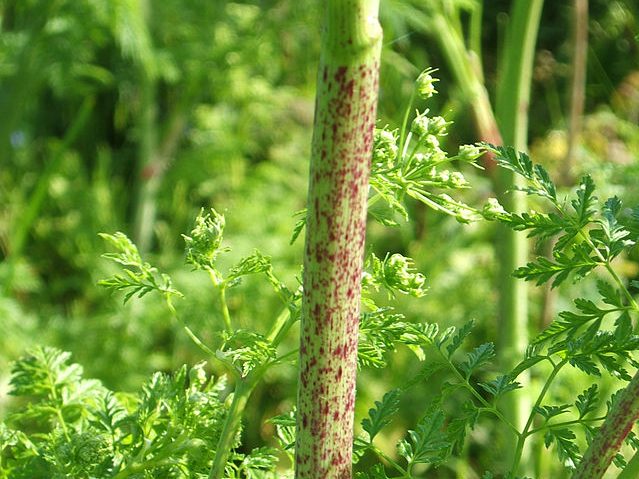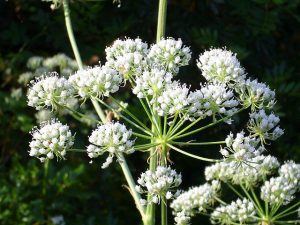Invasive Species: Poison Hemlock
Conium maculatum
Poison Hemlock is a native of Europe, Asia, and North Africa.
It was first documented in 1919 in Multnomah County.
Why is it important to control?
Poison hemlock thrives along streams, in agricultural ditches and in pastures. This species is highly toxic to livestock and humans. It spreads only by seed which can be dispersed by wind, water, animal fur, human clothing and boots, and machinery.
How can you identify it?


| Habitat: | Pastures, along waterways and ditches |
| Life Cycle: | Biennial |
| Height: | 3-7ft |
| Leaf Description: | Leaves are alternate, one per node, petioled(having a stem), and pinnately divided |
| Fruit & Flower Description: | Flowers are white compound umbels like umbrellas |
| Bloom Time: | May-June |


